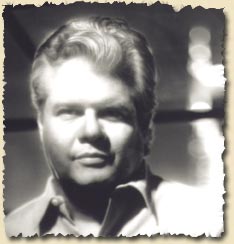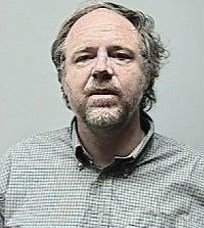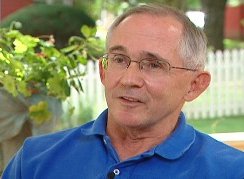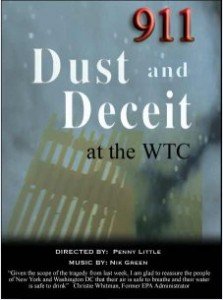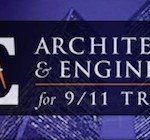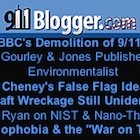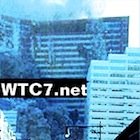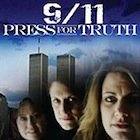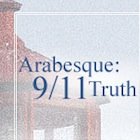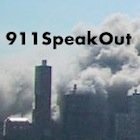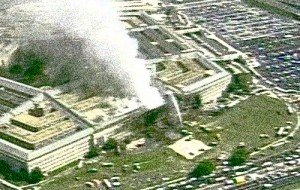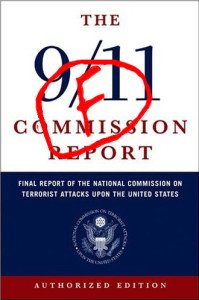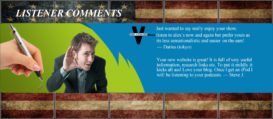by Kevin Ryan June 4, 2014

Richard Clarke, the former counterterrorism official, has recently come out suggesting that George W. Bush, Dick Cheney, and Donald Rumsfeld should be charged with war crimes. Unfortunately, media outlets reporting this story have failed to examine Clarke’s long relationship to Cheney and Rumsfeld and his record of having prevented the capture of Osama bin Laden. These omissions highlight that, although Cheney and Rumsfeld undoubtedly are guilty of post-9/11 war crimes, suspicions that they helped create the pretext for those crimes go unreported.
Clarke’s history is regularly misrepresented in the media. It’s often said that he started in his counterterror position under Clinton when he was, in fact, appointed to it by George H.W. Bush in 1992. Clarke is a right wing hawk who had close ties to Cheney and Rumsfeld going back at least another decade with his selection for a secret Reagan Administration project. Clarke, Cheney and Rumsfeld were among a small group that spent nearly 30 years practicing to takeover the United States government in the Continuity of Government (COG) program. Their secretive COG plan was implemented only once—on the morning of 9/11.
Considering the media’s treatment of Clarke, it’s no surprise that most people have little or no understanding of his relationship to Cheney and Rumsfeld. It’s also not surprising that some people don’t know why these men are primary 9/11 suspects, despite the many reasons to consider that Cheney and Rumsfeld were behind the attacks. Much of the evidence against Cheney and Rumsfeld is circumstantial. But the amount of evidence linking them to the crimes is far greater than that used to accuse Khalid Sheik Mohammed and Osama bin Laden.
Apart from George W. Bush, who was well controlled on that day, Cheney and Rumsfeld were in the most important positions of power on 9/11. Some of their closest colleagues were also in positions to affect the crimes.
- Rumsfeld’s direct subordinate Ralph Eberhart was in charge of the military exercises that disrupted the nation’s air defense response on 9/11.
- Cheney’s protégé Duane Andrews led SAIC on 9/11. Andrews was a leading expert on the DOD systems that failed and SAIC had numerous suspicious links to the facilities and systems impacted, as well as to the official accounts for what happened.
- Rumsfeld’s deputy Paul Wolfowitz managed the Pentagon renovation project that was focused on the exact spot where the Pentagon was hit.
- Rumsfeld’s fellow ABB director Peter Janson managed the company that did the renovation work at the Pentagon and that was hired to clean up the Pentagon and the WTC.
- After the attacks, Cheney’s old business partner Bruce Bradley went into business with WTC security company manager Barry McDaniel.
- Rumsfeld’s close friend Frank Carlucci ran the Carlyle Group, a company that was partly funded by the Bin Laden family and that employed Barry McDaniel before he left to run security at the WTC.
- Cheney and Rumsfeld were both on the advisory board of Salomon Smith Barney, the company that occupied almost all of WTC 7.
- Paul Bremer, the terror propagandist who was selected by Rumsfeld to govern occupied Iraq, had an office in the WTC and helped present the official account of what happened.
- Porter Goss, the old CIA operative who ran the initial investigation, had “long shown himself to be under the spell of Vice President Dick Cheney.”
The actions of Cheney and Rumsfeld on 9/11 also suggest their involvement in the crimes.
Vice President Cheney was in charge at the White House. That morning, he had an unusual early meeting with Sean O’Keefe, who was deputy assistant to the president and Deputy Director of the Office of Management and Budget. O’Keefe had been a close colleague of Cheney at the Pentagon and served as Secretary of the Navy under George H.W. Bush. The meeting with O’Keefe was remarkable in that, unlike Cheney’s normal meetings, it was unscheduled and lasted longer than Cheney normally allowed. And although the conversation seemed urgent, “In time, neither man would be able to recall what it was that had been so important.”
The attacks began as Cheney and O’Keefe were meeting in Cheney’s office. O’Keefe then left and Cheney began another meeting with his speechwriter. It was reported that other members of the White House staff began to congregate there until the Secret Service came in to move the vice president to the lower levels.
When questioned by the 9/11 Commission, Secretary of Transportation Norman Mineta testified that he came to the basement operations center at the White House, around 9:20 a.m., and Cheney was already there. Mineta said that Cheney had an exchange with a “young man” who came in and out over a period of time, giving Cheney updates about an incoming plane and asking if “the orders still stand.” Mineta’s testimony indicates that Cheney was aware of Flight 77 as it was approaching Washington, before the official account says that anyone knew, and that he was maintaining orders about that incoming plane.
Secretary of Defense Rumsfeld was in charge at the Pentagon. As the attacks were beginning, he was finishing a breakfast meeting with Pentagon leaders. Attendees said that at this meeting Rumsfeld predicted that a shocking world event would occur in the near future, one that would remind people of the need for a strong U.S. military.
By the time that the second plane hit the WTC, Rumsfeld had moved on to a meeting with his CIA briefer. Reports vary on where he was after that, but national security advisor Condoleezza Rice claimed that she could not reach him. Some said that Rumsfeld continued with regularly scheduled meetings after the second strike, and that he was on a roll with his predictions that morning. Apparently, he told Congressman Christopher Cox “Believe me, this isn’t over yet. There’s going to be another attack, and it could be us.” Minutes later, the Pentagon was hit.
After the Pentagon was hit, Rumsfeld wandered out to the parking lot for approximately 30 minutes. His presence there showed that he was not concerned about other planes that were reported hijacked and that he was not considering the danger to other potential targets. It was as if he knew what to expect.
To explain his behavior, Rumsfeld later stated; “I wanted to see what had happened. I wanted to see if people needed help. I went downstairs and helped for a bit with some people on stretchers. Then I came back up here and started—I realized I had to get back up here and get at it.”
Rumsfeld did not concern himself with the work of his direct subordinate, NORAD commander Ralph Eberhart, and he did not do his job to ensure the nation’s air defenses. Meanwhile, NORAD experienced inexplicable failures and Eberhart lied about it to Congress afterward.
After the 9/11 attacks, Cheney tried to prevent an investigation. It was later learned that Rumsfeld co-authored a letter to the 9/11 Commission, warning it to limit its investigation and denying it access to critical evidence. According to Kean and Hamilton’s book Without Precedent, each of the commissioners was also invited to have private meetings with Rumsfeld, who gave them advice throughout the investigation. This was despite the fact that Rumsfeld’s DOD failed to provide many of the documents that had been requested.
Considering the unraveling of the official accounts for 9/11, people don’t need more deceptive comments from Richard Clarke about the obvious post-9/11 crimes of Cheney and Rumsfeld. What people need to understand is that Cheney and Rumsfeld were running the show on 9/11 and were in perfect position to coordinate the attacks. Their actions on that day, as well as their surprising links to others who had the access and knowledge to accomplish the crimes, make them prime suspects.

